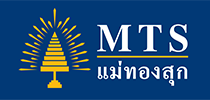



Price pressures in the world's most populous country eased last month on the back of falling food prices, data on Thursday showed. The government's consumer price index (CPI) rose an annual 2 percent, slower than April's 2.3 percent expansion and missing forecasts for a 2.3 percent increase, Reuters reported.
But the producer price index (PPI) remained stuck in negative territory for the 51st straight month, dipping 2.8 percent on-year, versus April's 3.4 percent fall and Reuters estimates for a 3.3 percent decline.
"The biggest driver behind the lower CPI reading was falling food prices. Pork inflation has peaked and fresh vegetable prices are coming off so looking forward, we expect CPI to hover between 1.5 to 2 percent over the remainder of the year," said Wei Li, China economist at Commonwealth Bank of Australia.
"A 10 percent increase in oil prices would drive up producer goods inflation in China by roughly 6 percentage points so a large portion of the recovery in May's PPI was due to higher oil inflation that month."
Domestic demand, while stabilizing, remains tepid and economists widely agree that more growth supportive policies are highly warranted.
China's overall inflation profile remains soft so more stimulus from the People's Bank of China (PBOC) is likely necessary, said Hao Zhou, senior emerging markets economist for Asia at Commerzbank.
But officials can't rely on monetary tools alone amid the challenge of excess capacity in the industrial sector, he warned.
"If you continue to have low interest rates, nobody will exit the market. There will still be oversupply so prices will remain low...So at the end of the day, the central bank will still have to maintain its easing bias but let structural policies do more work."
The PBOC should announce at least one 25 basis-point interest rate cut this year, according to ING. this year, according to ING.
CNBC
http://www.cnbc.com/2016/06/
